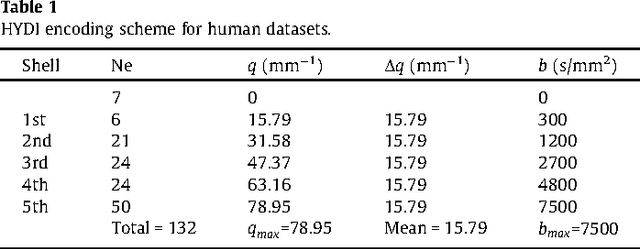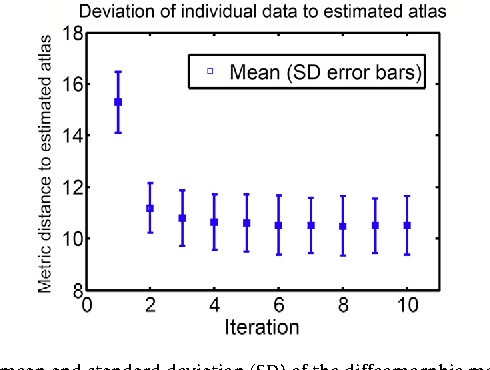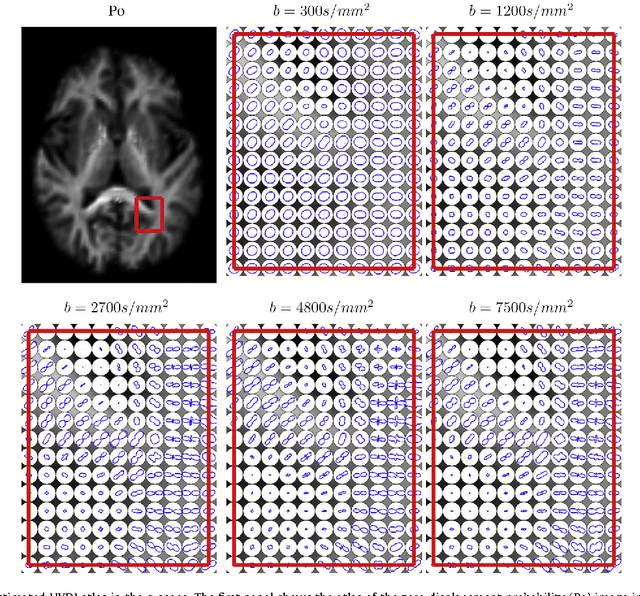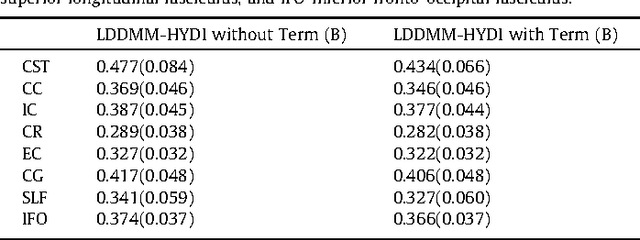A. Pasha Hosseinbor
An Unsupervised, Iterative N-Dimensional Point-Set Registration Algorithm
Aug 06, 2019Abstract:An unsupervised, iterative point-set registration algorithm for an unlabeled (i.e. correspondence between points is unknown) N-dimensional Euclidean point-cloud is proposed. It is based on linear least squares, and considers all possible point pairings and iteratively aligns the two sets until the number of point pairs does not exceed the maximum number of allowable one-to-one pairings.
A New Point-set Registration Algorithm for Fingerprint Matching
Feb 07, 2017
Abstract:A novel minutia-based fingerprint matching algorithm is proposed that employs iterative global alignment on two minutia sets. The matcher considers all possible minutia pairings and iteratively aligns the two sets until the number of minutia pairs does not exceed the maximum number of allowable one-to-one pairings. The optimal alignment parameters are derived analytically via linear least squares. The first alignment establishes a region of overlap between the two minutia sets, which is then (iteratively) refined by each successive alignment. After each alignment, minutia pairs that exhibit weak correspondence are discarded. The process is repeated until the number of remaining pairs no longer exceeds the maximum number of allowable one-to-one pairings. The proposed algorithm is tested on both the FVC2000 and FVC2002 databases, and the results indicate that the proposed matcher is both effective and efficient for fingerprint authentication; it is fast and does not utilize any computationally expensive mathematical functions (e.g. trigonometric, exponential). In addition to the proposed matcher, another contribution of the paper is the analytical derivation of the least squares solution for the optimal alignment parameters for two point-sets lacking exact correspondence.
Diffeomorphic Metric Mapping and Probabilistic Atlas Generation of Hybrid Diffusion Imaging based on BFOR Signal Basis
Sep 25, 2013



Abstract:We propose a large deformation diffeomorphic metric mapping algorithm to align multiple b-value diffusion weighted imaging (mDWI) data, specifically acquired via hybrid diffusion imaging (HYDI), denoted as LDDMM-HYDI. We then propose a Bayesian model for estimating the white matter atlas from HYDIs. We adopt the work given in Hosseinbor et al. (2012) and represent the q-space diffusion signal with the Bessel Fourier orientation reconstruction (BFOR) signal basis. The BFOR framework provides the representation of mDWI in the q-space and thus reduces memory requirement. In addition, since the BFOR signal basis is orthonormal, the L2 norm that quantifies the differences in the q-space signals of any two mDWI datasets can be easily computed as the sum of the squared differences in the BFOR expansion coefficients. In this work, we show that the reorientation of the $q$-space signal due to spatial transformation can be easily defined on the BFOR signal basis. We incorporate the BFOR signal basis into the LDDMM framework and derive the gradient descent algorithm for LDDMM-HYDI with explicit orientation optimization. Additionally, we extend the previous Bayesian atlas estimation framework for scalar-valued images to HYDIs and derive the expectation-maximization algorithm for solving the HYDI atlas estimation problem. Using real HYDI datasets, we show the Bayesian model generates the white matter atlas with anatomical details. Moreover, we show that it is important to consider the variation of mDWI reorientation due to a small change in diffeomorphic transformation in the LDDMM-HYDI optimization and to incorporate the full information of HYDI for aligning mDWI.
 Add to Chrome
Add to Chrome Add to Firefox
Add to Firefox Add to Edge
Add to Edge